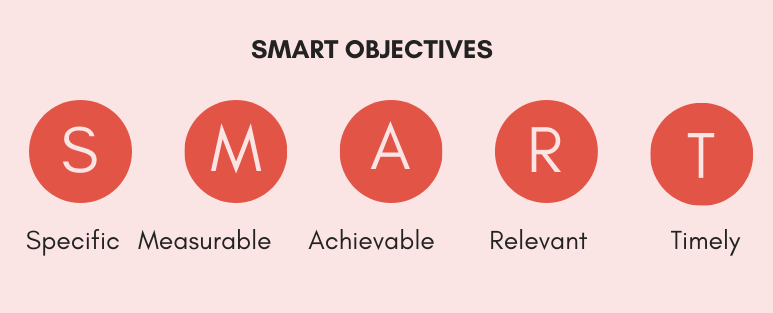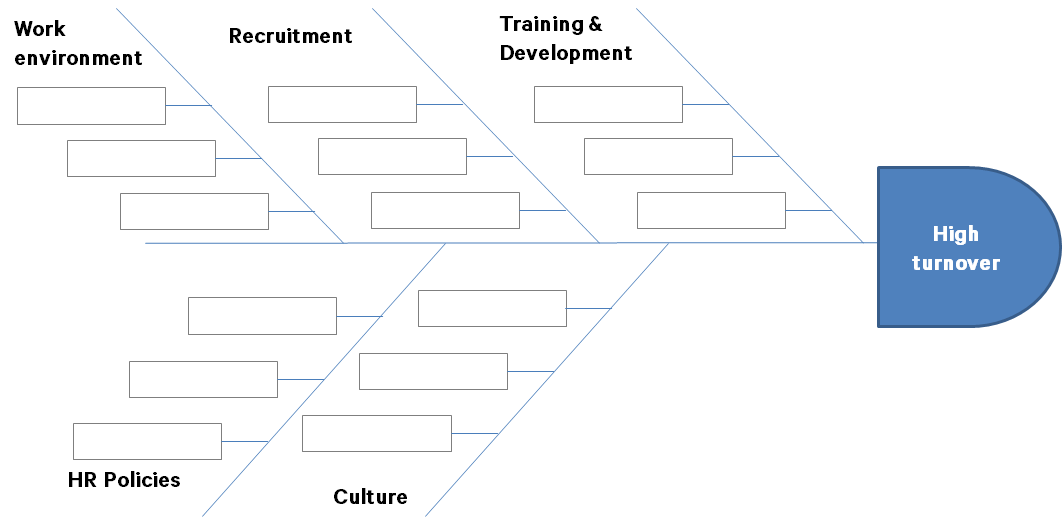Proses Langkah-demi-Langkah Merancang Program Keterlibatan Karyawan di Tahun 2024
Lihat panduan langkah demi langkah untuk merancang rencana keterlibatan karyawan yang kokoh untuk mendapatkan yang terbaik dari upaya keterlibatan Anda.
Di halaman ini
Program keterlibatan karyawan merupakan komponen penting dari rencana strategis tahunan Sumber Daya Manusia. Laporan Gallup mengenai keterlibatan karyawan mengungkapkan bahwa organisasi dengan tingkat keterlibatan yang tinggi memiliki profitabilitas 21% lebih tinggi. Selain itu, organisasi besar seperti Cisco merencanakan seluruh keterlibatan karyawannya untuk setiap hari sepanjang tahun.
Selain itu, sebuah Artikel Gallup mengungkapkan bahwa karyawan yang terlibat telah menunjukkan perbedaan 81% dalam hal ketidakhadiran, dan peningkatan produktivitas sebesar 14%, sehingga perlu menerapkan program keterlibatan karyawan yang solid. Oleh karena itu, artikel ini menyusun proses langkah demi langkah dalam merancang Rencana Keterlibatan Karyawan tahunan dengan menggunakan kerangka kerja Manajemen Strategis dan ide-ide rencana aksi keterlibatan karyawan.
Merancang rencana strategi keterlibatan karyawan
Berikut ini adalah panduan langkah demi langkah untuk merancang strategi keterlibatan karyawan dan menjalankannya secara menyeluruh.
Langkah 1: Pindai lingkungan internal organisasi.
Memindai lingkungan internal berarti mempelajari berbagai cara karyawan, manajemen, pemangku kepentingan, strategi bisnis, budaya, sumber daya, dan kapabilitas organisasi terlibat satu sama lain.
Misalnya, apa saja titik kontak karyawan yang berbeda yang dimiliki oleh pimpinan dengan karyawan? Apa saja alat produktivitas yang berbeda yang digunakan dalam organisasi? Bagaimana organisasi menerapkan strategi bisnis? Apa saja berbagai tunjangan ketenagakerjaan yang ditawarkan? Seberapa sering program penjangkauan dilakukan oleh tim kepemimpinan?
HR tidak hanya perlu menyusun pertanyaan-pertanyaan yang unik bagi organisasi mereka, tetapi juga mengevaluasi diri sendiri tentang seberapa baik mereka dalam setiap interaksi ini.
Alat-alat yang dapat digunakan untuk melakukan penelitian ini adalah:
- Diskusi kelompok
- Wawancara Karyawan/Pemangku Kepentingan
- Survei karyawan
- Data sumber daya
- Ulasan kinerja
- Umpan balik
Langkah 2: Memindai lingkungan eksternal organisasi
Lingkungan eksternal organisasi terdiri dari lanskap persaingan, ekonomi, politik, sosial-budaya, dan teknologi dari pasar tempat organisasi bekerja. Hal-hal tersebut penting untuk dipertimbangkan dalam menyusun program keterlibatan karyawan tahunan. Hal ini mempengaruhi efektivitas semua inisiatif strategis.
Abhijit Bhaduri, penulis buku terlaris 'The Digital Tsunami' menyebutkan bagaimana tren teknologi seperti Augmented Reality dan Holografi dapat secara efektif digunakan dalam simulasi pekerjaan dan pengalaman karyawan. Dengan demikian, memiliki pengamatan yang cermat terhadap perubahan tolok ukur kompetitif, tren industri, alat digital untuk keterlibatan karyawan, dan lain-lain terbukti berguna untuk menciptakan kembali program untuk menciptakan tenaga kerja yang terlibat.
Alat-alat berikut ini dapat digunakan untuk melakukan pemindaian ini:
- Riset pasar
- Pembandingan
- Analisis pesaing
- Analisis tren
Langkah 3: Menetapkan tujuan keterlibatan karyawan organisasi
Proses penetapan tujuan biasanya merupakan proses menentukan tujuan yang ingin dicapai oleh organisasi dalam hal sumber daya manusia - budaya, sumber daya manusia, kebijakan sumber daya manusia, dll. Kekuatan, Kelemahan, Peluang, dan Ancaman dapat menjadi konteks untuk menentukan tujuan.
Sebagai contoh, asumsi seperti - 'Kompetitor kami menggunakan referensi karyawan sebagai sumber yang kuat untuk merekrut talenta mereka. Karyawan rujukan cenderung merupakan talenta terbaik dan paling dipertahankan di industri ini,' merupakan ancaman yang dapat membuat organisasi mempertimbangkan 'Meningkatkan rujukan karyawan' sebagai tujuan SDM mereka.
Metodologi S.M.A.R.T. banyak digunakan dan terkenal karena kemampuannya untuk memandu dan membantu mencapai tujuan. Metode ini mengacu pada pedoman berikut ini.

Misalnya, tujuan seperti 'Meningkatkan referensi karyawan perusahaan' perlu dibuat:
- Spesifik, misalnya, 'Kami bertujuan untuk meningkatkan referensi karyawan kami.
- Dapat diukur, misalnya, 'Kami bertujuan untuk meningkatkan persentase rujukan karyawan dari X ke Y.'
- Dapat dicapai, misalnya, 'Kita sudah berada di posisi X, sehingga mencapai Y seharusnya mudah dilakukan.
- Sebagai contoh, 'Referensi karyawan adalah pedang bermata dua yang membantu merekrut karyawan baru dan secara tidak langsung juga mengindikasikan Net Promoter Score karyawan.
- Tepat waktu, misalnya, 'Peningkatan rujukan karyawan ini harus dilakukan dalam tahun keuangan ini.
Langkah 4: Analisis kesenjangan
Setelah menetapkan tujuan, langkah selanjutnya adalah mengidentifikasi status quo variabel dan mengenali jarak yang perlu ditempuh untuk mencapai tujuan yang direncanakan.
Hal ini dapat dilakukan dengan menggunakan berbagai alat, tetapi analisis Fishbone (Ishikawa) adalah alat yang cukup sederhana dan efektif untuk menelusuri masalah-masalah yang perlu ditangani untuk mencapai tujuan ini. Berikut ini adalah gambaran bagaimana analisis Fishbone (Lean Six Sigma) dilakukan.
- Mengorganisir kelompok fokus lintas fungsi.
- Izinkan mereka untuk mengidentifikasi akar masalah (kesenjangan) yang mempengaruhi pencapaian tujuan yang telah ditentukan.
- Akar penyebab (kesenjangan) dapat dikategorikan di bawah 'Orang', 'Proses', 'Kebijakan', dll., dan selanjutnya ditelusuri lebih lanjut.
- Analisis akar masalah merekomendasikan untuk memahami hingga 5 tingkat 'Mengapa' dari setiap penyebab untuk mendapatkan akar masalah yang tepat.
- Buatlah daftar akhir dari akar permasalahan (Kesenjangan).

Sebagaicontoh, analisis tulang ikan untuk 'Rujukan karyawan' dapat mengungkap akar penyebab seperti 'Ketidakadilan gaji', 'Kurangnya asuransi karyawan', 'mekanisme umpan balik karyawan yang tidak memadai, dll.
Langkah 5: Pilihan strategi
Setelah kesenjangan yang tepat dalam proses didaftar, ini perlu diprioritaskan untuk dieksekusi. Pada umumnya terdapat sejumlah jalur untuk mencapai tujuan, sehingga memilih strategi yang tepat (atau kesenjangan yang harus diatasi) merupakan komponen penting dalam eksekusi.
Analisis tulang ikan selanjutnya memungkinkan penyaringan dan memprioritaskan kesenjangan ini dengan menggunakan metode berikut:
Terhadap setiap daftar akhir akar masalah, lakukan evaluasi sebagai berikut:
- Bagaimana dampak penyelesaian kesenjangan ini terhadap pencapaian tujuan? (Dampak)) (Beri nilai pada skala 1: menandakan dampak rendah hingga 10: menandakan dampak tinggi)
- Seberapa layak/mudahkah secara finansial untuk mengatasi kesenjangan ini? (Kemudahan) (Beri nilai pada skala 1: sangat sulit hingga 10: sangat mudah)
- Hitung nilai [Dampak + Kemudahan] dan buat tabulasi terhadap masing-masing akar masalah
- Urutkan daftar akar masalah (kesenjangan) dalam urutan menurun dari jumlah total (bagan Pareto )
Sebagai contoh, kesenjangan seperti 'Ketidaksetaraan gaji' memiliki tingkat kemudahan yang rendah (karena tingginya biaya yang dibutuhkan) dan dampak yang tinggi, sedangkan 'Mekanisme umpan balik karyawan yang tidak memadai' memiliki tingkat kemudahan yang tinggi (karena biaya pelaksanaannya rendah) namun memiliki dampak yang sedang. Bergantung pada kelayakan finansial dan prioritas bisnis, para pemimpin harus memilih strategi yang tepat.
Langkah 6: Membuat tim
Tim yang memimpin pelaksanaan proses/program keterlibatan karyawan sangat penting untuk keberhasilannya. Bergantung pada keahlian yang dibutuhkan oleh strategi tertentu - tim perlu memiliki anggota yang dapat berkontribusi untuk itu.
Sebagai contoh, strategi 'Menciptakan mekanisme umpan balik karyawan yang kuat' membutuhkan ahli desain kuesioner, ahli teknologi (jika diperlukan otomatisasi), dan ahli SDM (untuk memimpin dan mengimplementasikan strategi tersebut - dengan cara yang dapat meningkatkan keterlibatan).
Langkah 7: Pengukuran kinerja
Aspek 'keterukuran' dari tujuan SMART menyediakan metrik yang harus diperhatikan untuk mengevaluasi dampak dari strategi untuk mencapai tujuan.
Misalnya, untuk tujuan 'Meningkatkan referensi karyawan dari X ke Y' - persentase aktual referensi karyawan dari total rekrutmen adalah metrik yang harus diperhatikan.
Langkah 8: Menganalisis Varians
Perbedaan antara kinerja aktual dan standar perlu dihitung untuk menemukan kesenjangan lebih lanjut dalam implementasi. Sebagai contoh, jika strategi tidak memungkinkan untuk mencapai Y% rujukan karyawan yang diharapkan dalam waktu yang ditentukan, maka hal ini perlu dievaluasi dan dipertimbangkan kembali.
Langkah 9: Mengambil tindakan korektif
Evaluasi ulang strategi harus mengikuti seluruh alur penetapan tujuan dan pemilihan strategi (dari Langkah 1 sampai 9). Alasan mengapa sebuah strategi tidak efektif atau tujuan tidak tercapai bisa jadi karena adanya asumsi yang salah selama proses perencanaan strategi.
Sebagai contoh, alasan mengapa tujuan 'Meningkatkan referensi karyawan perusahaan' tidak tercapai dapat disebabkan oleh beberapa alasan berikut ini.
- Target yang ingin dicapai diasumsikan salah - 'Y' adalah target yang terlalu tinggi.
- Jangka waktunya terlalu singkat.
- Analisis tulang ikan melewatkan faktor penentu utama, misalnya, 'Imbalan rujukan untuk karyawan yang merujuk'.
- Kesalahan perhitungan dalam analisis dampak. Misalnya, dampak 'Ketidaksetaraan gaji' lebih rendah dari yang diasumsikan.
- Tim tidak memiliki keterampilan penting yang diperlukan untuk implementasi. Misalnya, katakanlah desain kuesioner dalam implementasi umpan balik karyawan.
Alat bantu digital untuk keterlibatan karyawan
Alat bantu digital untuk keterlibatan karyawan dapat membantu Anda menciptakan dan menumbuhkan budaya kerja yang berkinerja tinggi dan penuh keterlibatan. Namun, alat ini bekerja paling baik hanya jika strateginya dibuat sedemikian rupa sehingga menekankan pengakuan dan umpan balik serta membantu karyawan merasa terhubung dengan misi dan nilai-nilai organisasi mereka.
Menggunakan alat bantu digital untuk keterlibatan karyawan - seperti Empuls dapat membantu Anda merancang rencana keterlibatan terbaik yang sesuai dengan DNA organisasi Anda. Jadwalkan demo hari ini dan bicaralah dengan para eksekutif kami untuk mengetahui lebih lanjut tentang Empuls. Anda juga bisa memulai uji coba gratis selama 30 hari sekarang.












